Features
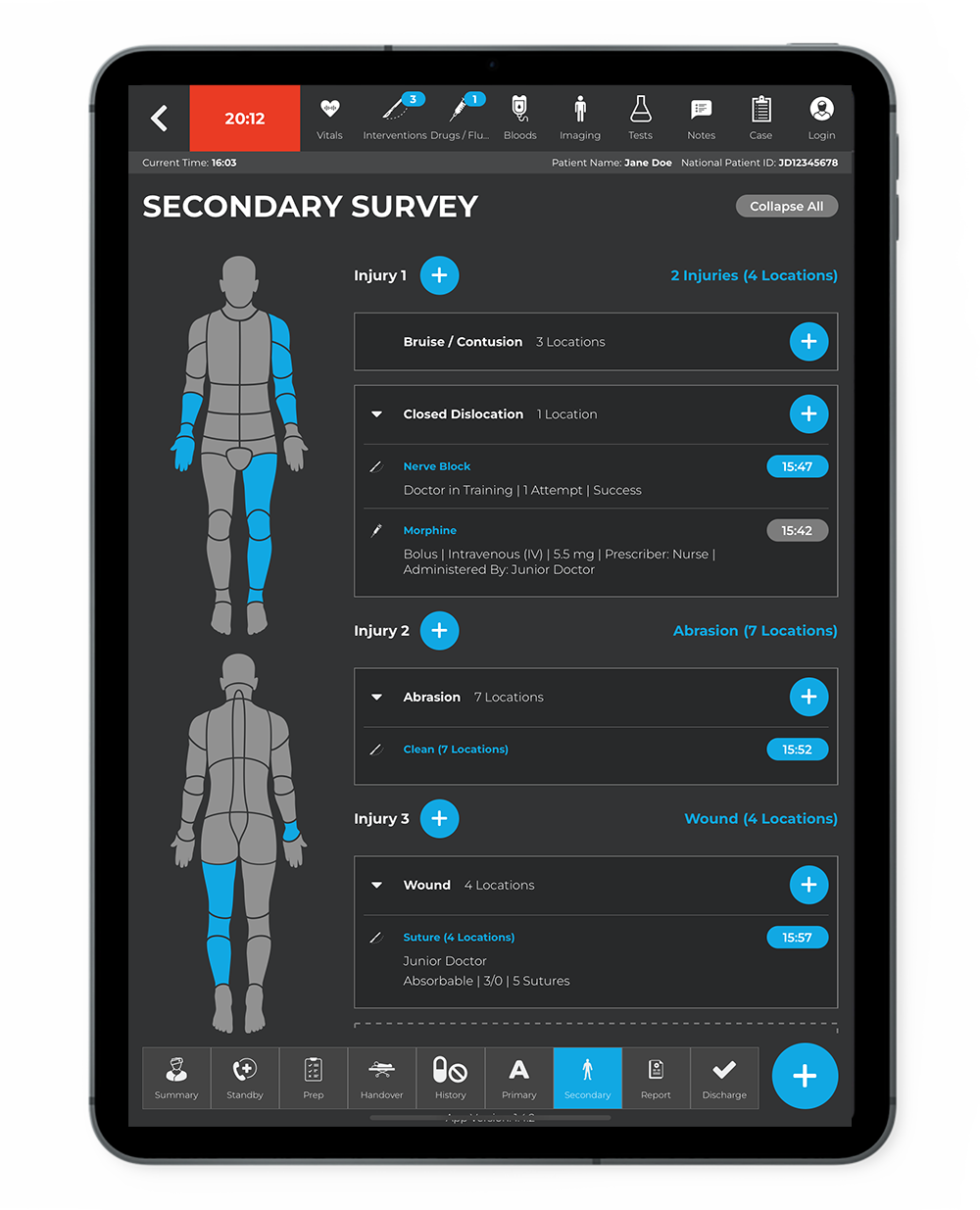
Better Data
Following standard ATLS protocol, combined with automated illustrations, enabling scribes to keep up with a fast paced environment.
Enhancing performance and user experience through familiar processes with clear and better data.
Rapid Capture
Simply drawing in a wound automatically reports locations of injury.
Increasing efficiency by capturing more data with greater accuracy.
Seamless Integration
Standard interactive physiology/vital signs reporting to aid clinical review and monitoring of patient status enabling deterioration detection.
Replicating known protocols for a familiar and intuitive user experience.
Decision Support
Swiftly paint on the location and severity of a burns injury, triggering prompt messaging to seek specialist input when required.
Enhancing performance by supporting clinical decisions at the point of care.
Intuitive Input
Helping scribes quickly record critical data points with visualisation support, with all 34 key interventions clinically mapped.
Enhancing performance by supporting the capture of quality data easily.
Better Data
Following standard ATLS protocol, combined with automated illustrations, enabling scribes to keep up with a fast paced environment.
Enhancing performance and user experience through familiar processes with clear and better data.
Rapid Capture
Simply drawing in a wound automatically reports locations of injury.
Increasing efficiency by capturing more data with greater accuracy.
Seamless Integration
Standard interactive physiology/vital signs reporting to aid clinical review and monitoring of patient status enabling deterioration detection.
Replicating known protocols for a familiar and intuitive user experience.
Decision Support
Swiftly paint on the location and severity of a burns injury, triggering prompt messaging to seek specialist input when required.
Enhancing performance by supporting clinical decisions at the point of care.
Intuitive Input
Helping scribes quickly record critical data points with visualisation support, with all 34 key interventions clinically mapped.
Enhancing performance by supporting the capture of quality data easily.
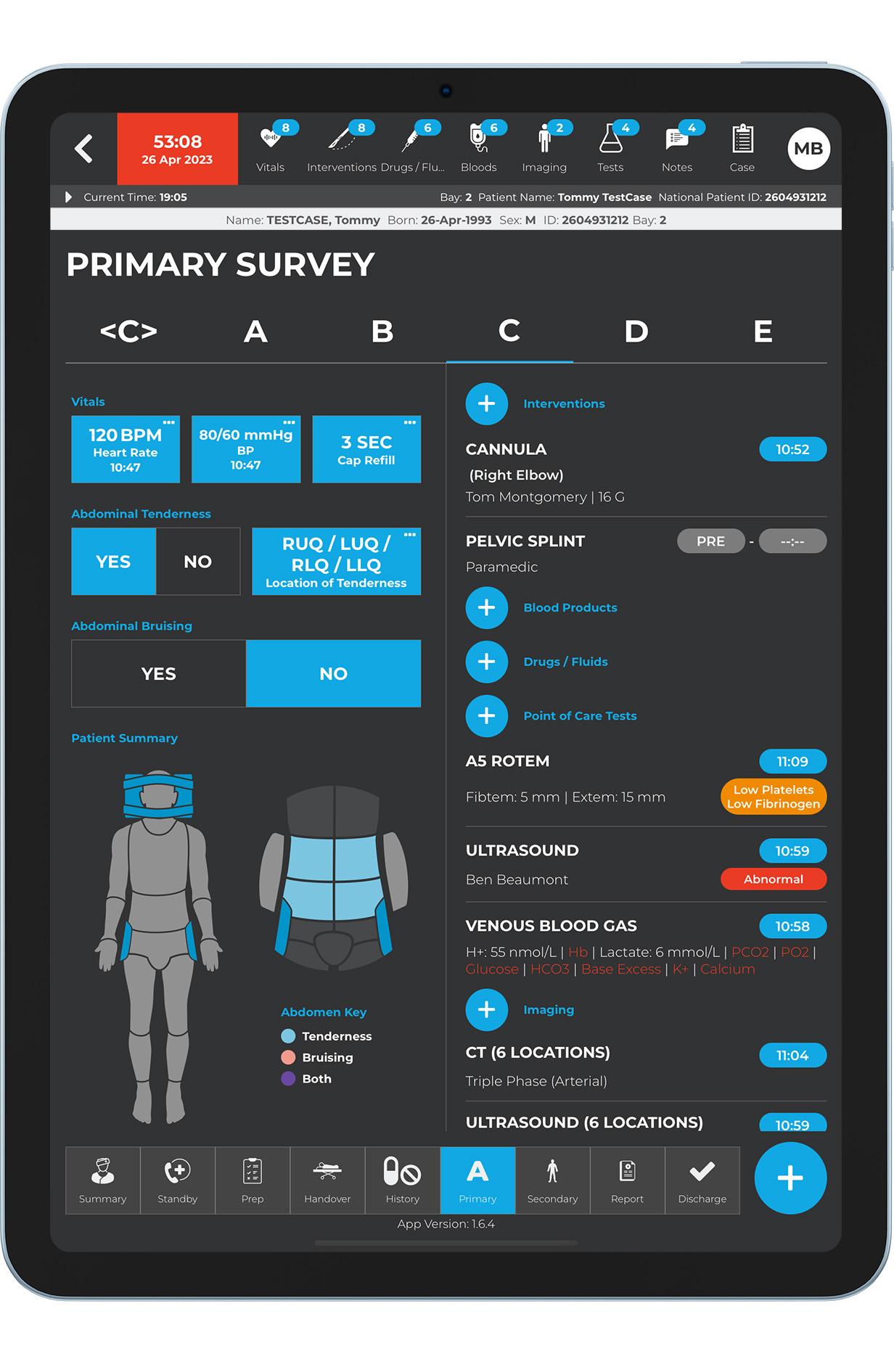
Better Data
Following standard ATLS protocol, combined with automated illustrations, enabling scribes to keep up with a fast paced environment.
Enhancing performance and user experience through familiar processes with clear and better data.
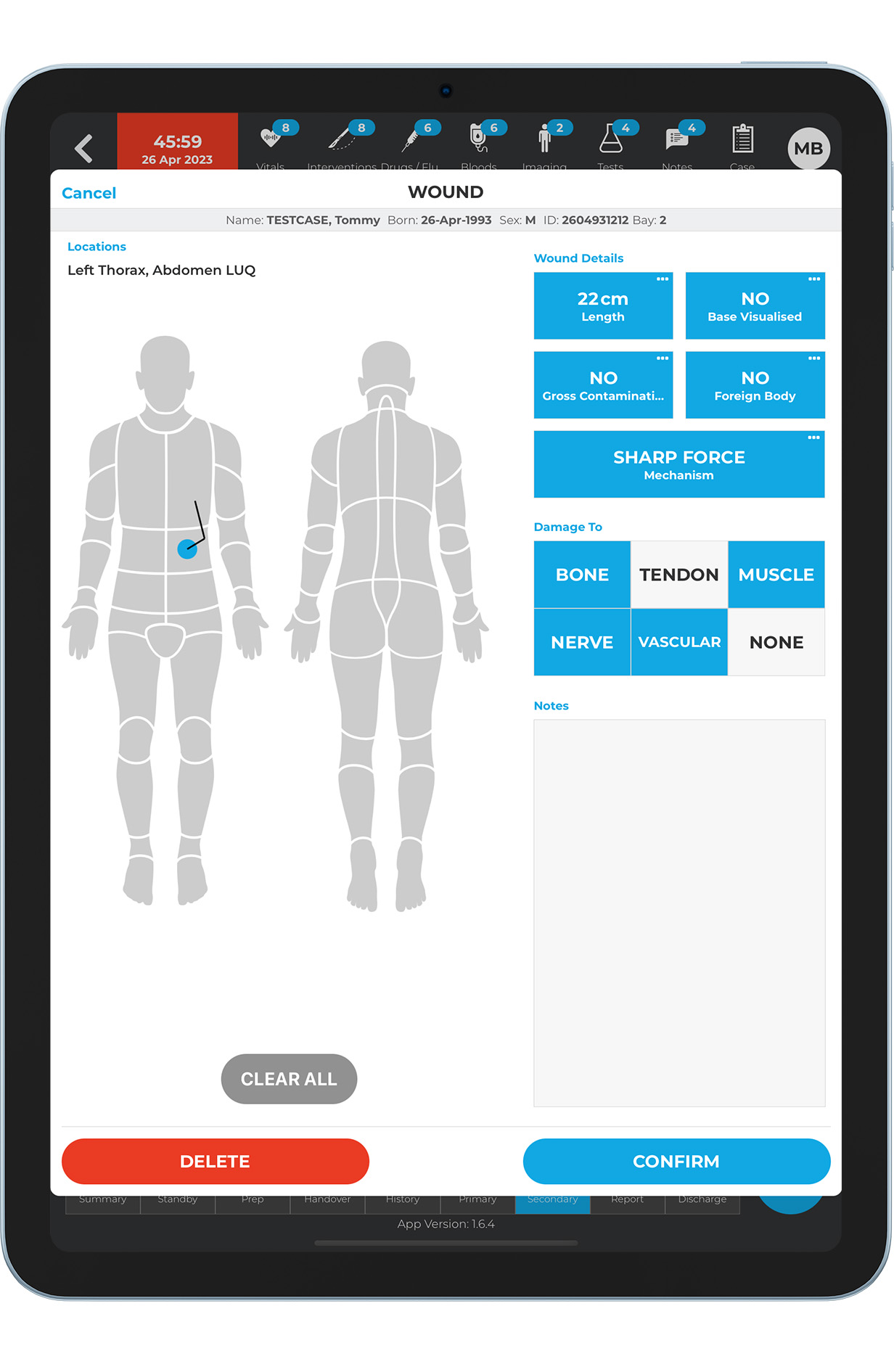
Rapid Capture
Simply drawing in a wound automatically reports locations of injury.
Increasing efficiency by capturing more data with greater accuracy.
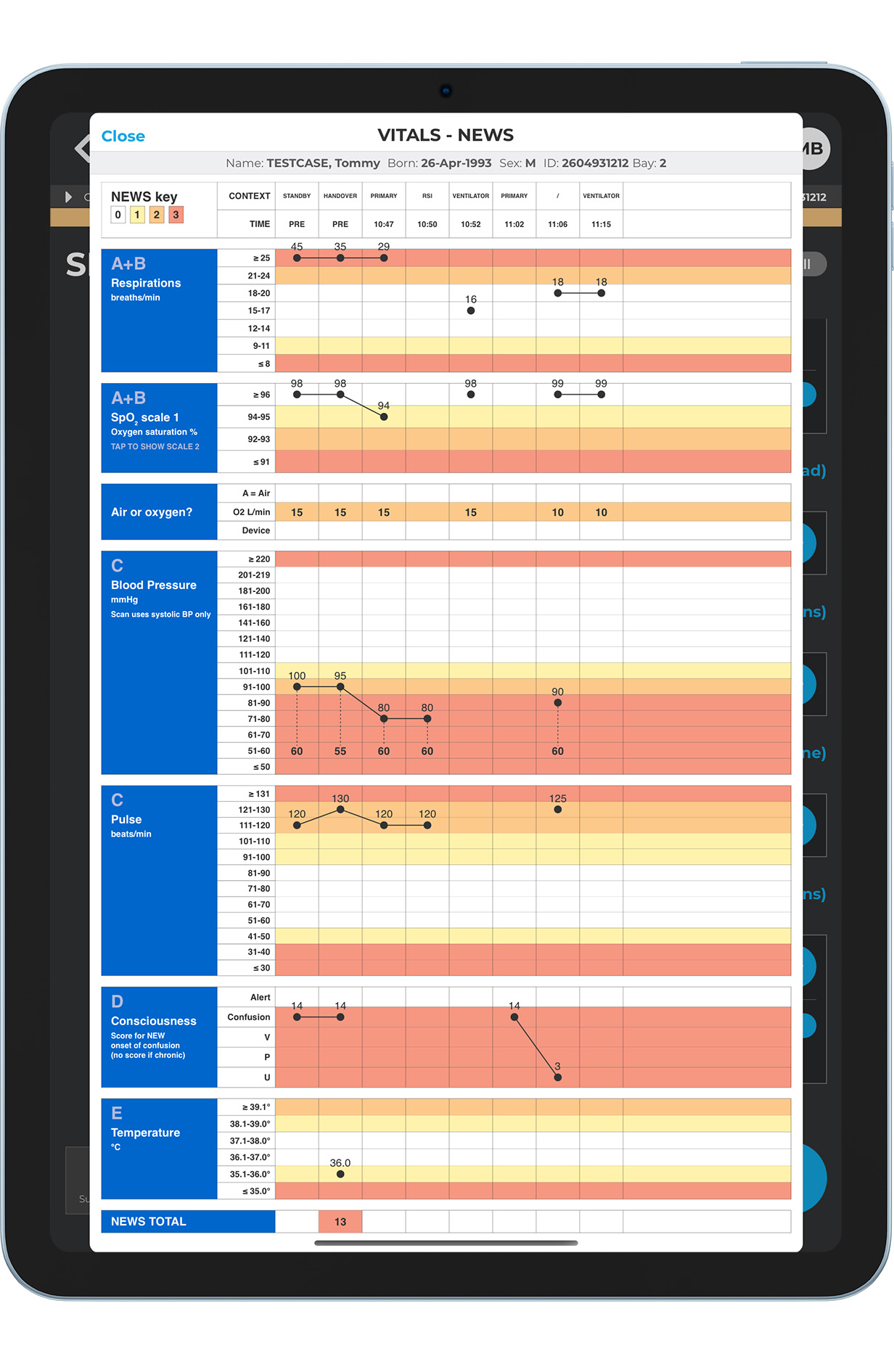
Seamless Integration
Standard interactive physiology/vital signs reporting to aid clinical review and monitoring of patient status enabling deterioration detection.
Replicating known protocols for a familiar and intuitive user experience.
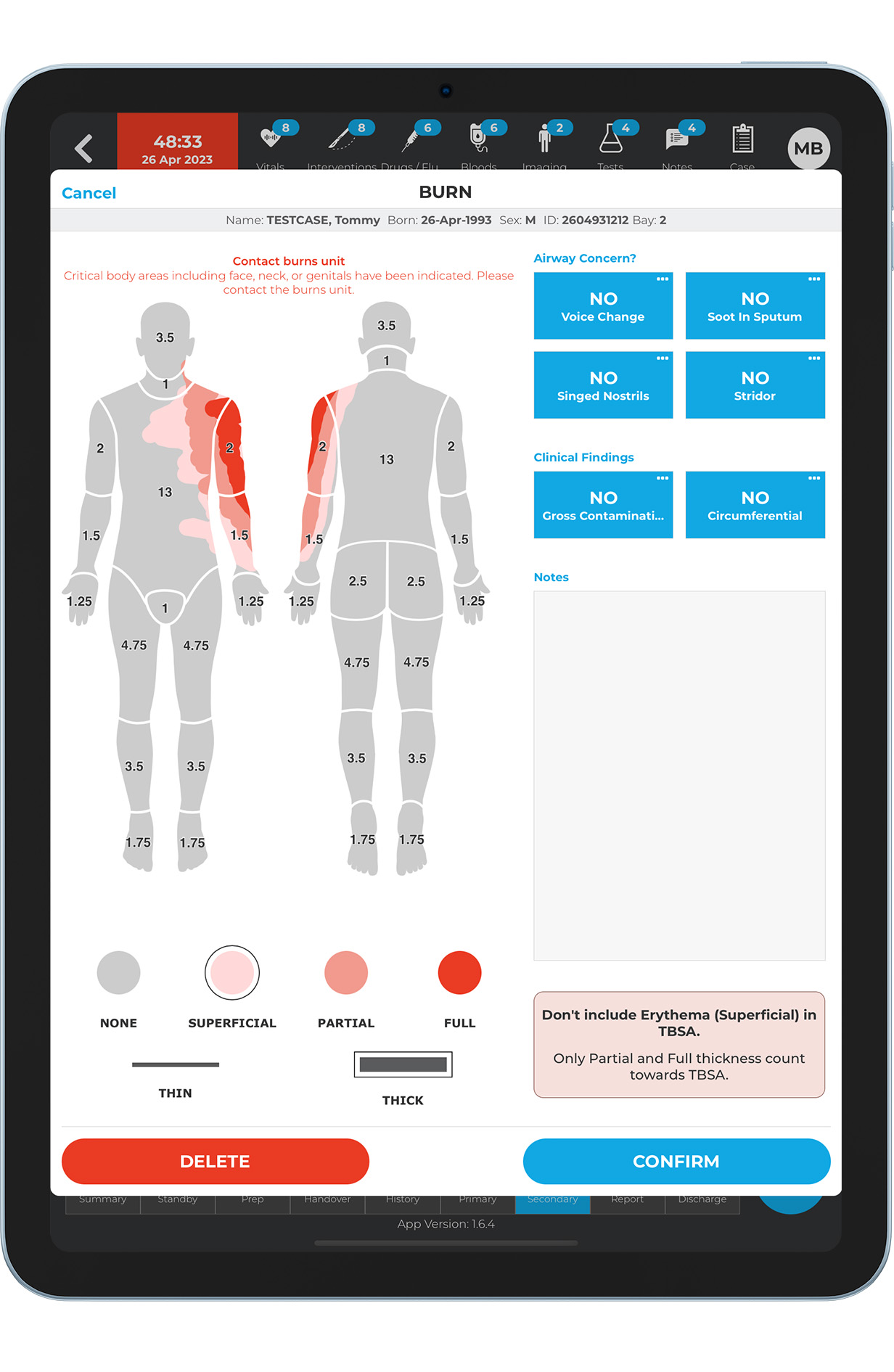
Decision Support
Swiftly paint on the location and severity of a burns injury, triggering prompt messaging to seek specialist input when required.
Enhancing performance by supporting clinical decisions at the point of care.
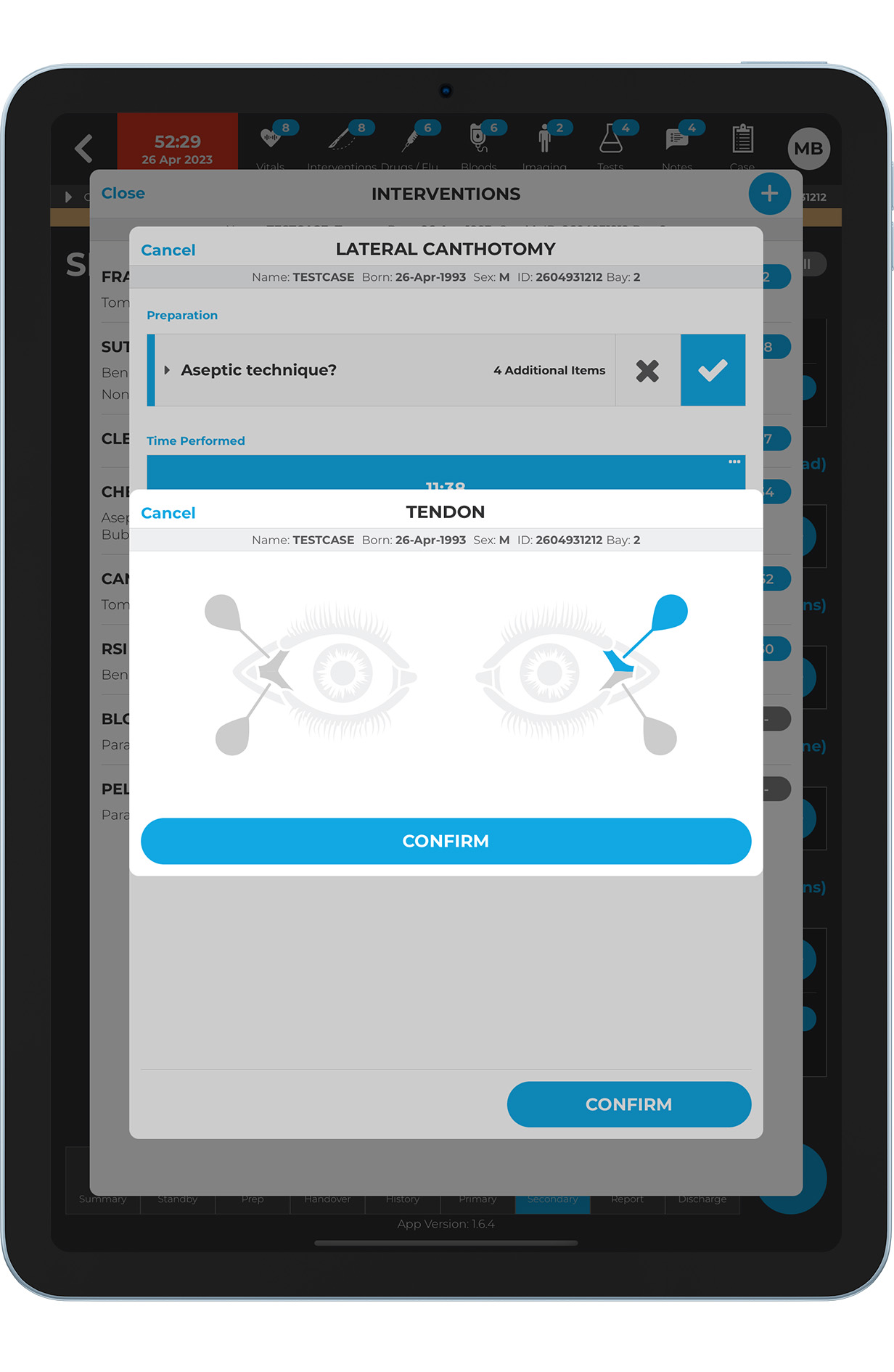
Intuitive Input
Helping scribes quickly record critical data points with visualisation support, with all 34 key interventions clinically mapped.
Enhancing performance by supporting the capture of quality data easily.
Benefits
Increasing efficiency & enhancing performance
Real time performance metrics: Review overall hospital performance against national KPIs in real time.
Identify strengths and weaknesses: Live data feeds offering rich insights to help identify strengths and weaknesses and facilitate rapid evolution of practice. Performance can be measured at a site level or across a Board, Trust or even nationally.
Simplified national reporting: Improved adherence and reporting to national standards with much lower administrative footprint.
Efficiency: Saves time and reduces admin burden. Automated reporting, reducing paperwork and validation to ensure completeness. (No illegible handwriting, reduction in follow-ups from colleagues and no loss of key data.)
Saving money & increasing revenue
Improved documentation: Vastly improved case documentation, improving the communication of a patient travelling through hospital departments while affording better protection from litigation.
Empowering research & improving lives
Reduced patient stays: Improved patient outcomes leads to reduction in ongoing bed usage for major trauma patients.
Find out more about each feature
Familiar to use
Replicates many well known protocols for an incredibly familiar and intuitive user experience. Internationally recognised standard documents are replicated throughout the app.
For example, physiology can be captured on a standard NEWS2 chart and injuries painted freehand onto body illustrations.
Internationally recognised standards are adopted throughout from ATLS, ATMIST handovers, AMPLE patient history, and ASIA spinal injury assessment.
Extensive testing and simulation taught us that the app is most clear and intuitive when the digital workflow matches traditional paper workflow. Use in hospitals in Scotland has shown us that scribes can easily transition from paper through light simulation and practice on recorded scenarios.
- Decision support framework for clinicians at the point of care.
- Automated surfacing of ATLS protocol to reduce variability.
- Built for iPad using React Native, a cross-platform technology that facilitates deployment to any platform in use by customers.
- Rapid data entry designed to support scribes in high stress cases that evolve rapidly.
Rapid Capture
The App has a range of custom inputs designed specifically for the clinical setting which allows scribes to work quickly while retaining accuracy. Research shows it’s as fast at capturing data as paper.
Decision Support
Context specific data and tools surfaced to support decision making, e,g. burns calculator or blood clotting diagnosis and treatment. Passive in nature, they don’t drive clinical decisions, rather support faster decision making. As a result, control of the care pathway remains firmly in the hands of the Trauma Team Leader.
Our ROTEM screen highlights the diagnosis and treatment plan so the scribe or team lead don’t need to reference other documentation. Clinical decision making is therefore kept entirely in the hands of the team lead.
System Integration
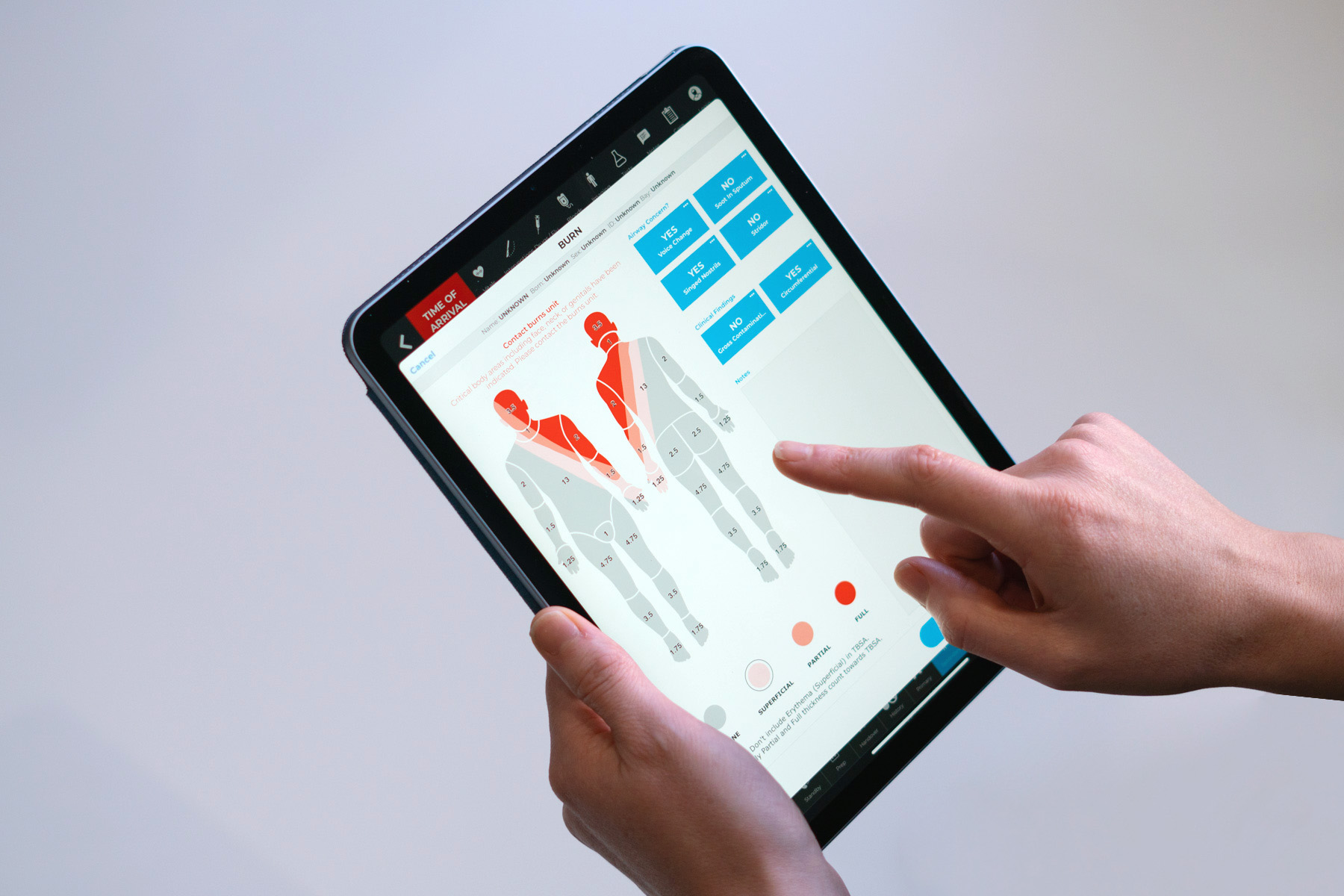
Third party API with notification service allowing for easy integration into any EPR. Both structured and unstructured data feeds available (JSON/FHIR/PDF report).
Uses hospital user account records and passwords
Improves quantity and quality of documentation
Rich dataset to improve trauma care and delivery
The app also has support for:
- Imaging management
- Point of care tests
- Lab requests and key results
- Prescriptions (drugs, blood, fluids and ventilation)
- Patient managements (personal details, movements, next of kin, disposition)
- Team management (present and activities in the room)
- ED discharge
Securely automates reporting
Proven to capture a far richer and accurate data set than current scribing techniques.
The application captures considerably more data points in real time than existing scribe’s processes.
The result is an incredibly rich and granular dataset to support research, billing, litigation cases, performance monitoring, KPI tracking, and much more.
The Trauma App clinically maps the 34 key interventions performed in trauma, helping scribes quickly and easily enter critical data points.
Every app interaction is captured as a discrete data point providing a complete and unchanging timeline of ‘events’, tracked against the logged-in user, and translated live on-screen, in PDF reports and dashboards. This creates a highly secure and traceable trauma document, as well as an extremely rich dataset for research, team feedback and engagement, high level performance analytics, cost analysis and much more.
Robust and highly secure:
- Available offline for when a trauma occurs in a limited or no connectivity environment.
- Secure federated access to case data.
- Secure secondary transfers between federated user groups.
- Secure data storage via Microsoft Azure.
- Robust, real-time, time-stamped granular data collection for 100% traceability
- Key performance indicators are validated throughout and prompted at case sign-off, encouraging a high degree of reporting compliance.
- Automated reporting reduces the administrative burden for clinicians and admin staff.
- Multi user. The application uses a non-destructive data approach and real-time cloud database technology, allowing multiple tablets to access the same case simultaneously.
- Data mapped to international standards with research-ready data sets.
- Real-time metrics available to the clinical team facilitating performance review and growth.
- Optional data warehousing allows for richer real-time reporting via MS PowerBI or preferred tooling.


